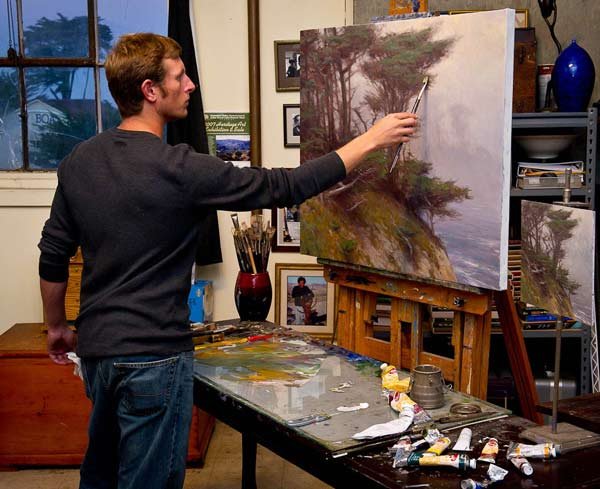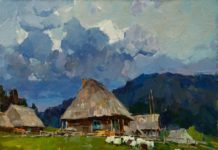The Irvine Museum has strongly advocated for plein air painting during its entire 22-year existence, but now it will take an even more active role by collecting work by the finest plein air artists working today.
“The museum recognizes that this period of art that we are in now is one of the most exciting, and that has a lot to do with American landscape painting, and specifically, plein air painting,” says Jean Stern, executive director of the Irvine Museum in Irvine, California.
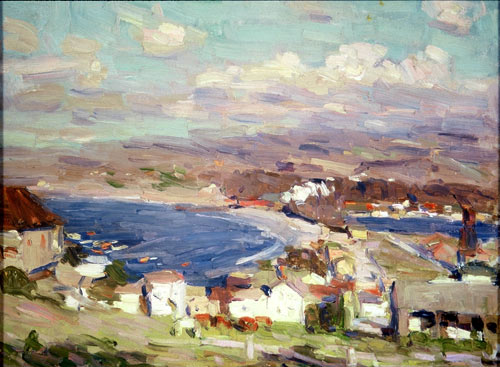
“Study of Monterey Bay,” by E. Charlton Fortune, oil, 12 x 16 in. This piece from the museum’s collection shows the type of historical plein air paintings the Irvine has collected.
The museum up to this point has collected only historical paintings more than 70 years old. The Orange County institution is dipping its foot into contemporary painting, first with an exhibition titled “Then and Now,” which will be split between historical painters and modern ones. The show opens May 17 and will feature about 50 artists total.
The pieces from contemporary artists in the “Then and Now” exhibition will be on loan from collectors. Beyond that, Stern says the museum will proceed very carefully in its collection of contemporary painters. “We are very concerned about having the best quality of work hanging, no matter what era it comes from,” says Stern. A good indication of the type of work the Irvine Museum will collect is probably visible in the museum’s selections for the Irvine Museum Gold Medal, an award given the last three years at the California Art Club’s Gold Medal Juried Exhibitions. Jesse Powell won the award in its first year, while Charles Muench won it in 2013 and John Burton won the medal this spring.
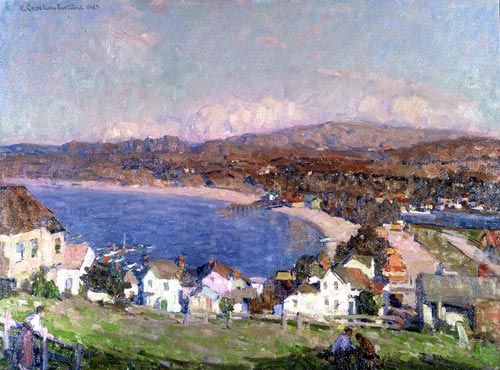
“Monterey Bay,” by E. Charlton Fortune, oil, 30 x 40 in. Private collection. Studio work is an important part of the museum’s collection, despite its support of outdoor painting.
The museum has long supported plein air painting in California and beyond through prize money at various plein air events and through the active leadership of Stern, who has served as the juror of awards for more than 70 competitions and has delivered more than 200 lectures, most of them promoting plein air painting. (Stern — and the Irvine Museum — were acknowledged for their contributions to contemporary plein air painting with a Lifetime Achievement Award at the recent 2014 Plein Air Convention & Expo in Monterey, California.) Over the course of the museum’s 20-plus years, the institution has donated more than $150,000 in prize money to painting events. The museum, and especially Joan Irvine Smith, its chairman, have served as benefactors for events at the Mission San Juan Capistrano, those put on by the Crystal Cove Conservancy, and others. Smith has also been known to buy at least one painting at such events.
Clearly, plein air painting is important to the Irvine Museum. But it may be surprising to hear Stern unequivocally say that “plein air is a vehicle, not a destination. Studio work is the ultimate goal of plein air painting. Artists make monumental, majestic work from a study painted en plein air. We show both the study and the studio painting so visitors can see the germinal idea behind the painting and the piece itself. We look to history and see that plein air sketches from 100 years ago were not signed, because they were not meant to be sold.” This may be what the Irvine is saying when it explains its Gold Medal award at the CAC exhibitions as rewarding “the best landscape painting executed in the traditional plein air approach.” When asked about this, Stern stresses that neither he nor the museum are interested in telling artists how or what they should paint. But an institution, and an award, often needs to be specific in its own statements.
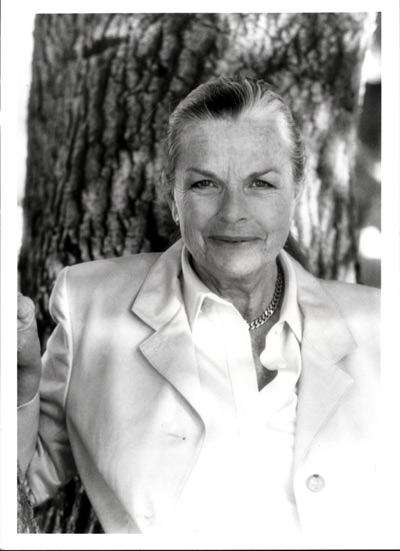
Joan Irvine Smith, chairman of the museum and a supporter of plein air painting. Photo: Lori Bryston
The Irvine Museum has certainly made a statement about arts education. Since its beginning, the museum has made a point of freely giving hardbound copies of its publications to schools and libraries. “We have donated more than 2,500 complete sets of all our books to anyone sending a request on letterhead,” says Stern. “Since the founding of our museum, we have felt that our books would do much better if they were out there, rather than just stored away somewhere. Every county and state library in California has them. Everywhere I or the president of the museum give lectures, we give the books to the local library.”
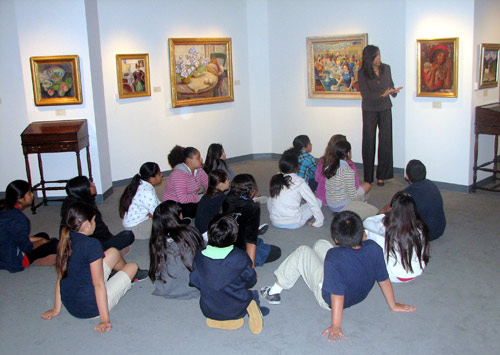
A field trip at the Irvine Museum led by Dora James, the museum’s curator of education
Additionally, the Irvine Museum does not charge admission. In fact, museum administrators found that some school groups weren’t visiting the museum on field trips because the schools couldn’t afford the cost of a school bus — so the Irvine Museum reimburses any private or public school for that cost. “We’ve had more than 60,000 students visit us over the years,” says Stern.
Then and now, the Irvine Museum has promoted art, and in particular plein air painting. And in the future, this support will evidently only grow.

